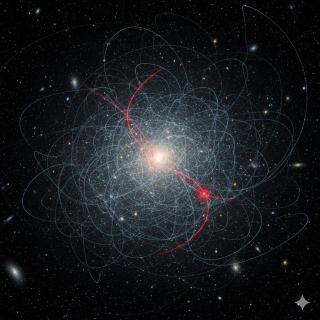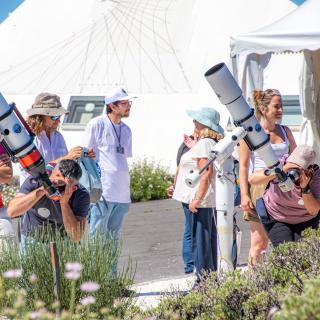With this competition the organizers want to make European space projects more attractive to young children
Almost 3,000 drawings by European children, among them some 240 Spanish children, will be travelling into space. They will do so on board CHEOPS (CHaracterizing ExOPlanet Satellite), a telescope whose objective is to identify new planets beyond the Solar System (which are known as exoplanets) and which is planned to be launched into space in December 2017. The drawing competition is an initiative of the European Space Agency, which wants to make its space projects more familiar to the youngest children, and whose Spanish partners are the CSIC (Higher Council for Scientific Research), the IEEC (Institute for Space Studies of Catalonia), and the IAC (Institute of Astrophysics of the Canaries).
Those who want to take part in the contest must be between 8 and 14 years old, and the drawings much have specific characteristics: they must be related to outer space, and must be in black and white. The latter rule is so that the chosen drawings can be recorded in miniature form on a plaque which will be mounted on the telescope. The drawings must be presented on a form which can be downloaded at http://www.cheops.es. At this website all the information about the competition can be found. The final date for entries is October 20th.
“To travel into space is a dream for many children. Now, those who also like to draw can combine their two passions and fulfil the dream with CHEOPS” says Ignasi Ribas, a CSIC researcher who is coordinating the contest in Spain. “Who would not want to have their “signature” on an instrument designed to discover new worlds?” adds Enric Pallé, of the IAC.
The “CHEOPS” mission
The name CHEOPS is an allusion to ancient Egypt, and refers to a Pharaoh and the pyramid named alter him. At the time of writing we know of some 2,000 exoplanets and with this space mission, part of the Cosmic Vision programme of the European Space Agency, the aim is to greatly increase this number.
The CHEOPS telescope will be dedicated to look for planet transits, which occur when a planet passes in its orbit between its parent star and our line of sight. The detection is performed using high precision photometry, a technique by which the brightness of a star is measured continuously, so that if a planet passes in front of the star we can detect it because of the tiny decrease in its apparent brightness as the planet occults a small part of its light. Transits of this kind allow us to determine the size of the planet with considerable accuracy and to tell whether it is a gaseous planet (such as Neptune) or a rocky planet (such as Earth).
This mission is the first of the class of “small missions” by the European Space Agency. There are three classes: large, which cost thousands of millions of euros; medium, which cost hundreds of millions of euros, and finally the small missions at a cost of less than 100 million euros. CHEOPS was chosen from among 26 proposal in October 2012, and its budget is 50 million euros.


